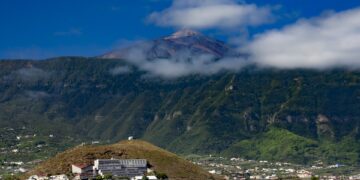The town of adeje He returned to fulfill his promise with the Virgin of La Encarnación, patron saint of the municipality. The revered image left from the parish of Santa Úrsula to San Sebastián on a pilgrimage that lasted about four hours. The Rogativa de la Virgen began in the church of Santa Úrsula where the traditional distribution of rods took place, the blessing of the pilgrims and the descent to San Sebastián began.
During the journey, various stops were made in traditional places along the way: cemetery, Portón de la Virgen, La Era and the humilladero, where San Sebastián was found.
The first stop was made at the cemetery, with a recognition of the people who have died. Next, they walked through the streets of Adeje until they reached the bridge that crosses the highway, until they reached the Portón de la Virgen.
The second stop was made at the Portón de la Virgen where a refreshment station was produced and thus we could continue the journey along the traditional path through the red toscas, which still preserve the tracks of the carts that were used in the past, at this point will make the second stop.
The third season was made in the Era. Finally, the image of the Virgin of La Encarnación was received by the co-patron of the San Sebastián municipality at the entrance to El Humilladero, the place where tradition says the carving of the Virgin was found. Both images entered the Church together where the traditional Eucharist took place.
La Rogativa is a tradition that dates back to the 16th century, when Pedro de Ponte decided to move the image of the Virgin to the church of Santa Úrsula, to protect it from raids by pirates from this area of the Adejero coastline. The neighborhood at the time, not very satisfied with the decision, promised to take the image on a pilgrimage every year to its first resting place on its feast day.
















